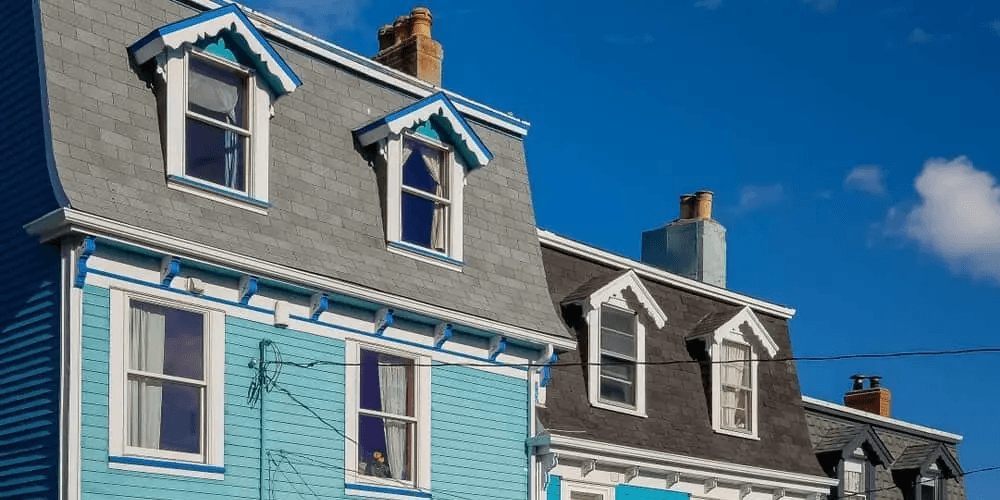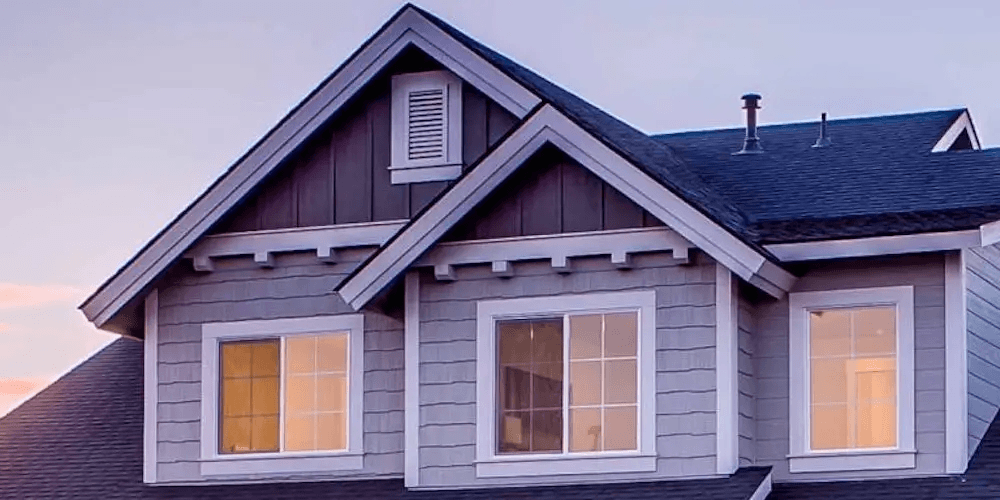If you're looking to add a little more sunlight or attic space to your home, you should consider installing dormers. No matter if your attic or loft is an active living space or purely for storage, dormers offer several benefits. Dormers not only brighten a room, but they can provide more space, help ventilate your home, and even increase curb appeal. Let's dig into the details about the different types of dormers and get a better understanding of how they could benefit your home.
What is a dormer?

Image source: Racine Roofing & Remodeling
Located on the slope of your roof, dormers are roofed structures that typically feature windows and increase the height of your ceiling. Dormer windows are also designed to give your attic or loft additional space.
Types of dormers
Gabled

Image source: Flickr
Gable dormers or "doghouse dormers" are the most common type of dormers and can typically be installed on any type of roof. These dormers are triangular with two sloped planes, which helps them shed rainwater easily, preventing any kind of leakage. Gable roofs are usually best for homeowners in colder, wetter climates because their water-shedding design leaves them less vulnerable to rain damage than other types of dormers.
Shed
Shed dormers are similar to flat roof dormers but feature a single slightly-sloped plane which gives an area a little more space. In addition to being able to accommodate smaller and larger-sized windows, the small slope on shed dormers also allows for water and snow to drain more easily.
Flat

Image source: JHmraD
Though they look similar to shed dormers, flat roof dormers have no pitch or slope, which can become an issue with rain and snow build-up. The main benefit to installing flat dormers is that they will maximize the amount of space at a cheaper cost. To avoid water leaks, we recommend using a roof membrane such as EPDM, which is water-resistant. With any type of flat roof, you'll also need to provide routine maintenance to avoid any expensive repairs.
Hipped

Image source: The Architect’s Guide
Hipped dormers are typically installed on hipped roofs, which slopes from all sides of the building. These dormers feature three sloped planes which shed water easily and help prevent any leakage from entering the home. Though hipped dormers are a little more expensive than others, they also offer a more striking appearance.
Eyebrow

Image source: This is Carpentry
These curved dormers are primarily designed for aesthetic reasons and help increase your home's curb appeal. Eyebrow dormers don't provide any real additional space to a room, but they do bring in a decent amount of light. Because these dormers are curved and have different shingles than the rest of the roof, water leakage is possible. Eyebrow dormers are custom-made and can be expensive, costing more than a traditional skylight.
Pedimented

Image source: Best in American Living
Similar to gabled dormers, pediment dormers have a triangular shape with two sloped planes. However, their major difference is that pedimented dormers extend out from the roof and typically appear in a row. Some pedimented dormers can be used in doorways, supported by pillars, and provide shelter from the rain.
Arched

Image source: WCMA Net
While arched or barrel dormers feature a striking appearance, they typically don't provide as much additional space. This type of dormer is smaller in size but does let in a good amount of natural light with its larger, vertical windows.
Wall

Image source: Home Stratosphere
Instead of extending away from the building, wall dormers extend the wall, creating more additional space for a room. They feature two sloped planes that are integrated with the main roof, separating the eave lines, and preventing any water leakage. While they may not be the most aesthetically pleasing dormers, they are cheaper and easier to install.
Pros and cons of dormers

Image source: Hitchcock Roofing & Construction
Pros of dormers
Adds more light - Dormers help lighten up the darkest parts of any attic or loft space. With increased light and visibility, you'll be able to repurpose certain areas of the room as a reading area or sleeping room.
Adds more space - Perhaps the main benefit to installing dormers is the space it can add. Because dormers extend a wall or extend away from the building, they can add a significant amount of space to a room.
Curb appeal - Adding dormers to your home doesn't just increase your living space and improve the natural lighting. Dormers also add visual interest to your home, increasing curb appeal.
Ventilation - With dormer windows, you'll also be able to help bring in cool air or let out hot air accumulating in higher levels of the home.
Cons of dormers
Difficult installation - Like with any construction, installing any dormer style will require an experienced professional. Not all roofers are experienced with installing dormers.
Expensive - With materials and labor, depending on the style and type of roof, could cost up to $12,000 or more. It's also important to remember to check with your local building department for any necessary permits to build dormers.
High maintenance - Depending on if you have a sloped roof or something flatter like a shed roof, these dormers may be more prone to water leakage. While dormers are usually installed with flashings, they can still be susceptible to moisture.
Are dormers worth buying?

Image source: Budget Construction Company
Installing dormers or any type of renovation can be expensive. No matter if you have a sloping roof or a curved roof, dormers can be an excellent and quick way to increase the amount of space and square footage of your home. Dormers are best if you’re looking to add a little more space and natural light to a dark room, or if you’re looking to increase your home’s value before selling. But before you invest in dormers, make sure you have the proper building permits and hire an experienced craftsman with installing them.
Chris Gennone is a content specialist and video producer at Fixr.com. He has 5 years of experience writing and editing for a variety of web and print publications, currently specializing in home improvement projects such as roofing, remodeling, and repairs. When Chris isn’t writing or in front of the camera, he’s either playing with his band or tracking down the best sandwich shops.
